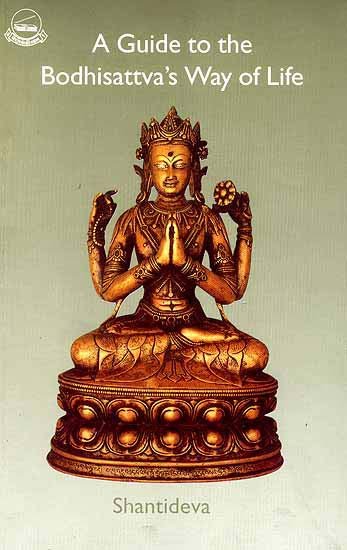A guide to the Bodhisattva’s way of life
author: Stephen Batchelor
edition: 2017, Library of Tibetan Works and Archives
pages: 185
ISBN-10: 8185102597
Topic: Mahayana
Translator’s introduction
Shantideva, a Buddhist master from the monastic university of Nalanda, India, composed his work “A Guide to the Bodhisattva’s way of life” (Bodhisattvacharyavatara) in the eighth century of the Christian era. In India at that time Mahayana Buddhism was well established and in the thousand or so stanzas of this text we find a concise yet comprehensive account of the principal features of this doctrine.
In contrast with the Arhat of Hinayana Buddhism –the being who has secured his own liberation from the misery of cyclic existence –Mahayana Buddhism has as its ideal the Bodhisattva who, uninterested in his liberation alone, strives for the well being of all living creatures.
The Bodhisattva comes into being with the development of the Awakening mind the pure altruistic with to achieve the state of a Buddha, and with this motivation he then proceeds to engage in way of life that is conducive to the realisation of his goal. In the first chapter of this work we shall see how Shantideva introduces the aspirant to the Awakening mind and inspires him to develop it; in the second, how the mind is prepared; and in the third chapter how Bodhisattva’s vow itself is finally taken. From this point onward the author continues to elucidate the means whereby to fulfil this commitment, namely through the practices of moral Discipline (chapter 4-5), Patience (chapter 6), Enthusiasm (chapter 7) meditation (chapter 8), and wisdom (chapter 9). In the final chapter the merits gained from the composition of the work are dedicated to the welfare of all beings in the form of a prayer. Hence this short but significant work contains the essential points of Mahayana Buddhist practice and for over a thousand years has acted as a guide for people throughout India, Tibet, China and Mongolia who have wished to follow this path.
In the autumn of 1974, in response to the request of several western Buddhists studying in Dharamsala, India, His Holiness the Dalai Lama encouraged and gave his blessing to the undertaking at the Library of Tibetan works and Archives of a project to translate Shantideva’s Bodhi-sattvacharyavatara. In order to do this, he suggested that the “Ocean of good Explanation”, a commentary to the Bodhi-sattvacharyavatara by the 12th century Tibetan Lama Thog-me Zang-po be used as the basis for the translation. For the following year Geshe Ngawang Dhargyey, proceeded to give a word by word explanation of this text translated by Sharpa Tulku. It is on the basis of that teaching the this translation has been completed.
Chapter 1-8 and chapter 10 have been translated in verse form corresponding to the stanzas of the root text. Where necessary, words have been added in brackets from the commentary. The ninth chapter, however, is presented in prose, frequently in the form of a dialogue between the Madhymika School and other Buddhist and non-Buddhist tradition. Here, most of the commentary of Thog-me Zangpo has been included for the sake of clarifying the often cryptic style of the root text.
